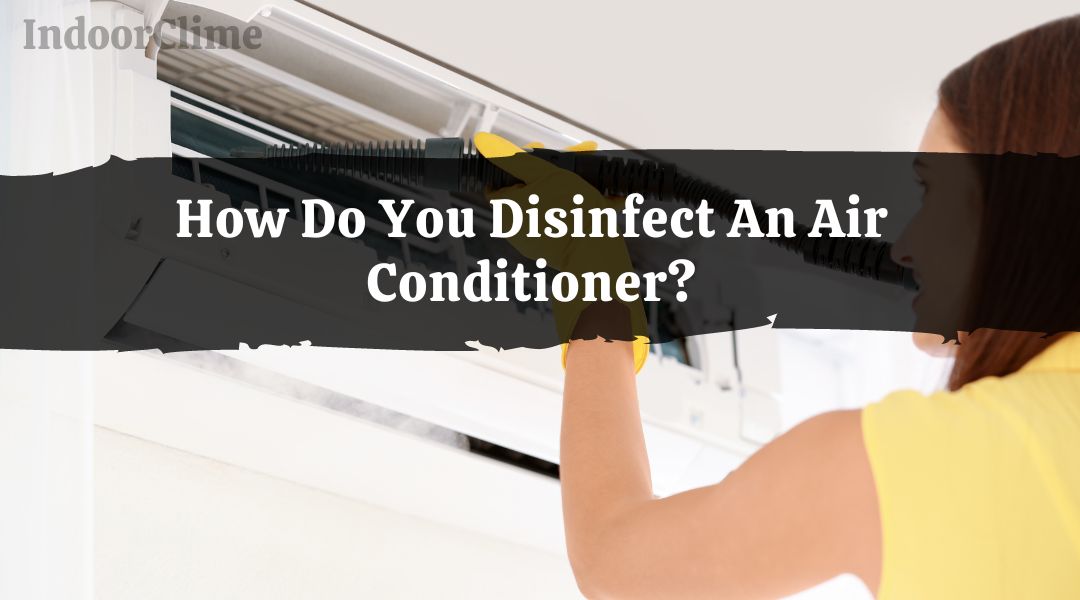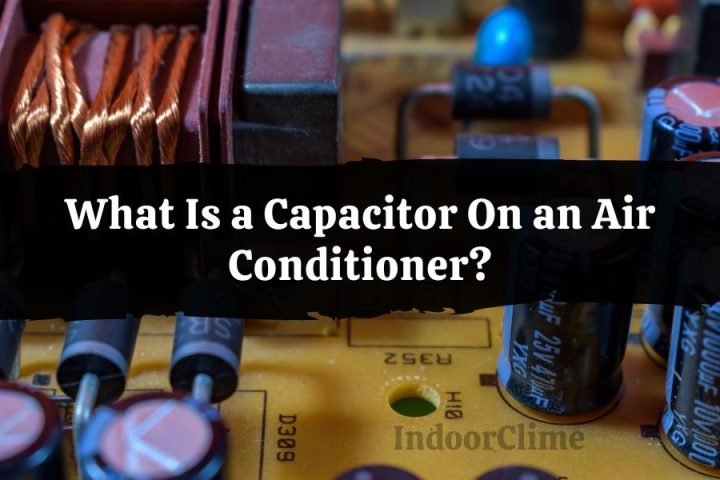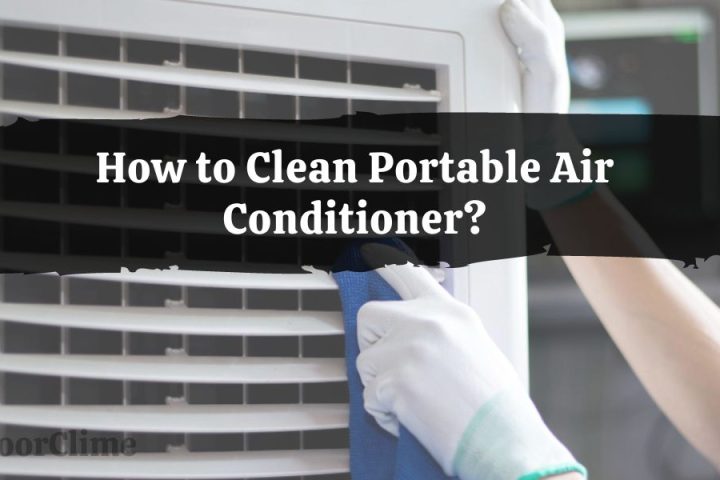Having an air conditioner is beneficial during hot weather. But to ensure its maximum performance and good air quality, disinfecting the device is essential.
Once the dust and debris clog the air filters, the normal flow of air will be impeded. Aside from that, bacteria, allergens, and viruses may get into the air released by the device, causing airborne diseases.
To disinfect an air conditioner, you must first unplug the AC unit. After unplugging it, replace or sanitize the filters and clear the debris from the device’s condenser.
Next, check if the refrigerant lines have any leaks, then test if the air from the device is 15 degrees cooler than the air from the return vent.
Can You Disinfect an Air Conditioner?

Disinfecting your air conditioner will help you stay healthy since it can prevent allergens and pollutants from entering your house or office.
Aside from that, cleaning the device regularly will help you reduce your electric bill.
In addition, it is less expensive to disinfect the air conditioner by yourself than to pay a professional to do it for you.
Remember, never leave your air conditioner unclean for an extended time. Instead, schedule a cleaning for your unit.
Learning to clean your air conditioner will save you money and time. However, it will require a lot of patience and caution. Unlike other devices, an air conditioner contains harmful chemicals.
Should You Disinfect Your AC Unit Yourself?
Others may find it costly to pay for sterilizing and disinfecting services for their AC units. However, if you’re not careful, you could lose more money if you damage some sections of your air conditioning system.
Although you can operate some air conditioning systems independently, other AC maintenance tasks should be entrusted to qualified individuals.
But with the right tools, you can do disinfection yourself. Ensure you have the proper knowledge and experience to do the task since you may damage the device.
If you are confident enough, use a handbook guide or read more articles to teach you how to do it properly. If you are unsure if you can do it properly, call for help.
How Do I Disinfect My Home AC?
Before we get into the details of disinfecting your air conditioner, there are a few things to consider.
First, it will take some time since some procedures require precise movements. Plus, you will need specialized tools to disinfect the unit properly.
Finally, if your air conditioning unit is very unclean or shows signs of damage, it’s best to hire an expert.
One of the main parts of this device is the evaporator coil. It comprises an inside component with an evaporator coil and a blower fan.
On the other hand, the outdoor part consists of the compressor and condenser coil.
Unplug the Power Of Your Air Conditioner.
First, deactivate the device by unplugging it directly from the main switch.
Cleaning the AC device without unplugging the power may cause short-circuit that will damage the system. It is also hazardous to those who work on it since it may lead to electric shock. The best way to prevent any accident is to unplug it first.
Sanitize Or Replace the Air Filter.
The filter catches dust, molds, pet dander, and fungus. Therefore, cleaning your AC filter to maintain proper airflow is essential.
If the device has a dirty filter and doesn’t change it regularly, it will be more difficult for your AC to function well. Moreover, it may increase your electricity consumption.
Some filters last longer than other filters provided, so check the packaging first on how often you must replace it.
Studies show indoor air pollution may cause allergic reactions, harming the lungs and causing skin infections. If you have a lot of pets in your home, changing your filter once every two months or after a month is suggested.
Clean the AC Condenser Coils
Condenser coils are essential in the cooling process of AC. Typically, the cleaning process of the coils takes less than an hour.
First, always check for any large debris like dead insects or dust.
Then, gently remove them with a coil cleaner or detergent mixed with water. Leave it for 10-15 minutes to soak and loosen the dirt.
Next, sweep and scrub away the dirt using a special soil brush. Then rinse it off with distilled water.
Clean and clear debris from the condenser
This crucial procedure will extend the life of your air conditioner. First, remove the outer cover by removing the bolts attached to it.
Next, remove any broken fins, dust, or dried leaves using a hand brush. Next, spray a cleaner over the surface without soaking the electrical parts inside the access panel. Finally, rinse and dry with a clean cloth.
Check the Refrigerant Lines
An AC unit contains refrigerant inside the copper coils. It absorbs heat from the environment and refrigerates when combined with other components.
The line sets include flare connections and joints that may have leaks. The bubble method is one of the most common leak detection methods.
Test the Air Conditioning Unit
If you are worried that something might be wrong with your air conditioner, check by turning it on.
Leave it running for at least 15 minutes, then place a digital thermometer for 5 minutes.
Compare it to the temperature from the return vent. The air coming out should be at least 15 degrees cooler than the inside.
How Often Should You Sanitize Your Air Conditioner?
Your air conditioner requires regular maintenance, yet different unit components need varying services.
For example, filters need to be replaced once or twice a month. Other parts of the air conditioner that will need cleaning at least once a year are the evaporator coils and condenser coils.
When the coil becomes clogged, its ability to absorb heat is diminished, thus reducing the efficiency of your air conditioner.
Are There Any Easy Ways To Disinfect an Air Conditioner?
Pure AC Mini-Split Air Conditioner Disinfecting Device

You can disinfect your AC unit using a Pure AC Mini-Split Air Conditioner Disinfecting Device in three easy steps.
First, attach the disinfecting device to the mini-split conditioner. Then, once you are done, press the button so that it can start disinfecting your air conditioner. Finally, wait 30 minutes until the device finishes cleaning your AC.
The benefit of this disinfecting device is that it can disinfect the internal components of your AC unit, even those that are difficult to reach.
Aside from that, it can quickly eliminate germs, molds, bacteria, and allergens in only 30 minutes. It makes disinfecting easier and more convenient.
PureAC Window Air Conditioner Disinfecting Device

This disinfecting device works perfectly with a window air conditioner. You only have to mount the disinfecting device on your window air conditioner.
Look for the button located on the machine and press it. Once you have pushed the button, wait 30 minutes, then remove the device from your AC unit. You will notice that the air from the AC is cleaner and fresher.
With the help of this device, it is easier to maintain the AC unit without using any specialized tools.
Plus, you don’t need experience disinfecting an air conditioner to do the task. The process conducted by the device is also similar to the disinfection method in medical facilities.
Can You Spray Disinfectant In an Air Conditioner?
Disinfectant spray on your air conditioner cleans and purifies the air without damaging the unit.
In addition, it helps eliminate pollutants and allergens inside your home. If you have enough money, you can purchase disinfecting spray.
You can also create an improvised disinfectant spray by using vinegar and alcohol. If you don’t like the smell of vinegar, you can use bleach instead.
However, the scent of this solution may penetrate your ventilation system and dissipate into your home, resulting in a foul odor. Also, it may cause damage to some parts of the AC unit.





